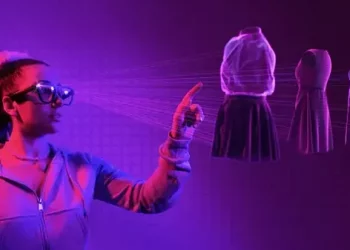In the realm of digital environments, terms like “metaverse” and “virtual reality” often intermingle, leading to confusion regarding their precise definitions and distinctions. While both concepts share commonalities in their immersive digital nature, they represent distinct paradigms within the broader spectrum of digital experiences. This article aims to elucidate the disparities between the metaverse and virtual reality, shedding light on their unique characteristics, applications, and implications.
Defining the Metaverse
Coined by Neal Stephenson in his 1992 science fiction novel “Snow Crash,” the term “metaverse” refers to a collective virtual shared space, typically accessed through the internet, where users interact with each other and digital entities in real-time. Unlike traditional online environments, the metaverse transcends individual platforms, encompassing a vast interconnected network of virtual worlds, augmented reality overlays, and immersive experiences.
Central to the concept of the metaverse is its persistent nature, wherein digital assets, identities, and interactions persist across different virtual environments. This persistence fosters a sense of continuity and immersion, blurring the lines between the digital and physical realms. Moreover, the metaverse is characterized by its user-generated content, enabling participants to create, customize, and monetize their virtual assets and experiences.
Key attributes of the metaverse include:
Interoperability: Users can seamlessly navigate between diverse virtual spaces and platforms within the metaverse, fostering social interactions and cross-platform experiences.
Economy: The metaverse often features its own virtual economy, where users can buy, sell, and trade digital goods and services using cryptocurrencies or other forms of virtual currency.
Social Interaction: Collaboration, communication, and socialization are central to the metaverse experience, with users engaging in various activities ranging from gaming and entertainment to education and commerce.
Immersion: Immersive technologies such as virtual reality (VR), augmented reality (AR), and mixed reality (MR) enhance the sense of presence and engagement within the metaverse, blurring the boundaries between the real and virtual worlds.
Exploring Virtual Reality
In contrast to the expansive and interconnected nature of the metaverse, virtual reality (VR) refers to a specific subset of immersive technologies that simulate realistic environments and experiences, typically through headsets or other specialized devices. VR environments are computer-generated and fully immersive, allowing users to interact with and explore virtual worlds in three dimensions.
Key features of virtual reality include:
Immersive Environments: VR technologies transport users to entirely virtual worlds, enabling them to perceive and interact with digital environments as if they were physically present.
Head-Mounted Displays (HMDs): VR experiences are often facilitated through HMDs, which encompass the user’s field of view and track head movements to create a sense of immersion and presence.
Spatial Interaction: Users can manipulate virtual objects and navigate digital spaces using motion controllers or other input devices, facilitating interactive experiences within VR environments.
Applications: VR finds applications across various industries, including gaming, entertainment, healthcare, education, and training, offering immersive solutions for simulation, visualization, and experiential learning.
While virtual reality represents a powerful tool for immersive experiences, it differs from the metaverse in several key aspects. Unlike the metaverse, VR environments are typically standalone experiences, limited to specific applications or platforms rather than forming part of a larger interconnected network. Additionally, VR experiences may lack the persistent social and economic frameworks characteristic of the metaverse, focusing primarily on individual or group immersion within isolated virtual environments.
Distinguishing Characteristics
To better understand the disparity between the metaverse and virtual reality, it is essential to examine their distinguishing characteristics:
Scope and Connectivity: The metaverse encompasses a vast interconnected network of virtual worlds and experiences, fostering social interaction, economic activity, and content creation across diverse platforms and environments. In contrast, virtual reality typically involves standalone immersive experiences within self-contained digital environments, lacking the broad scope and connectivity of the metaverse.
Persistence and Identity: In the metaverse, users maintain persistent digital identities and assets that transcend individual virtual spaces, enabling continuity and interoperability across different platforms. Virtual reality experiences, while immersive, are often ephemeral, with user interactions confined to specific applications or environments without persistent identity or asset management.
Economic Framework: The metaverse features its own virtual economy, where users can buy, sell, and trade digital assets and services using cryptocurrencies or virtual currencies. This economic framework facilitates commerce, entrepreneurship, and monetization within virtual environments. In contrast, virtual reality experiences may lack a cohesive economic infrastructure, with transactions typically limited to in-app purchases or standalone transactions within specific applications or platforms.
Social Interaction and Collaboration: Social interaction and collaboration are fundamental to the metaverse experience, with users engaging in various activities ranging from gaming and entertainment to education and commerce. The interconnected nature of the metaverse fosters community building, communication, and collective creativity across virtual worlds and platforms. While virtual reality enables interpersonal interaction within immersive environments, its scope may be limited to specific applications or multiplayer experiences rather than forming part of a broader social ecosystem.
Implications and Future Directions
Understanding the distinctions between the metaverse and virtual reality is crucial for navigating the evolving landscape of digital experiences and immersive technologies. While virtual reality represents a significant advancement in immersive technology, the metaverse offers a broader, interconnected framework for social interaction, economic activity, and creative expression within virtual environments.
The emergence of the metaverse has profound implications for various industries, including gaming, entertainment, education, commerce, and social networking. As the boundaries between the digital and physical worlds continue to blur, businesses and individuals alike must adapt to the opportunities and challenges presented by this evolving paradigm.
From virtual concerts and gaming experiences to virtual real estate and digital fashion, the metaverse opens up new avenues for innovation, entrepreneurship, and cultural expression. However, it also raises questions concerning privacy, security, governance, and digital rights within virtual spaces.
Moving forward, it is essential to foster collaboration and dialogue among stakeholders across industry, academia, government, and civil society to ensure the responsible development and equitable access to the metaverse. By embracing diversity, inclusivity, and ethical principles, we can harness the transformative potential of the metaverse to create immersive, engaging, and meaningful experiences that enrich our lives and empower our communities.
See also:Where To Buy Land In Metaverse
Conclusion
While virtual reality represents a powerful tool for immersive experiences, it is distinct from the metaverse, which encompasses a broader ecosystem of interconnected virtual worlds, social interactions, and economic activities. By understanding the nuances between these concepts, we can better navigate the evolving landscape of digital experiences and unlock the full potential of immersive technologies in shaping the future of human interaction and creativity.
Related topics:
What Technologies Are Used In The Metaverse

















